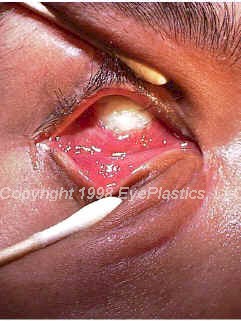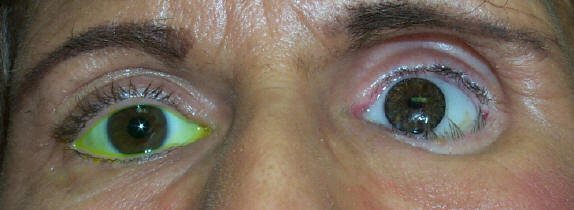Anophthalmic Socket Surgical Risks
Side Effects / Complications of Enucleation or Evisceration surgery
- When an eye is removed, the patient loses all vision and the cosmetic use of the globe. Noted complications include hemorrhage, infection and extrusion of the implant.
- Most patients with post-operative hemorrhage are either on blood thinners (e.g coumadin, plavix, heparin or aspirin) or are known to have a bleeding disorder. Such hemorrhages can be painful, but intervention is rarely helpful. Patients are typically treated with analgesic medications (pain-killers).
- Orbital Infections are very rare, but are more common with integrated orbital implants. Most secondary orbital infections can be managed with antibiotics, covering or surgical removal of the orbital implant.
Potential Complications
Exposed Orbital Implant
 |
The Photograph on the left is an exposed orbital implant. The implant, once exposed, is at risk for extrusion. If the exposure is limited it may possibly be repaired surgically. Otherwise, it my need to be removed, and a dermal fat graft procedure performed |
is the result of the following:
Deep Sulcus

- Loss of volume
- Structural changes
- Fat atrophy
- Retraction or changes in extraocular muscles
- Loss of support of the levator complex
Poorly Fitting:
.jpg)




.jpg)
